Some of the everyday items you have at home could be poisonous to you or your child. Find more information about each type of hazard, including poisoning risk, treatment at home, and when to seek medical attention, in the dropdowns below.
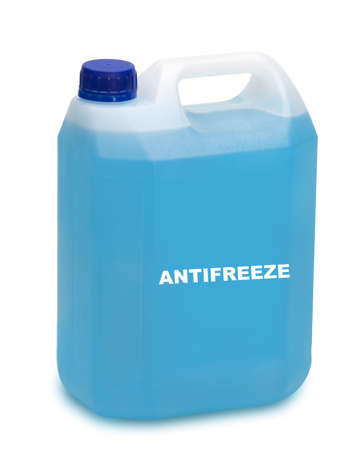
Description
Antifreeze, or coolant, is used to help regulate a vehicle’s engine during extreme temperatures. Its common base chemical is called ethylene glycol, which is highly toxic and can damage the kidneys even if swallowed in small amounts. Ethylene glycol can be absorbed in minimal amounts from skin contact or inhalation; however it is most toxic when ingested.
Poisoning risk
High: dangerous in small amounts (more than a taste or a lick).
Expected symptoms
- Early symptoms may include drowsiness, drunk behaviour and upset stomach.
- Can lead to kidney failure and death in severe toxicity.
Home treatment
- Call the Poison Centre right away for assistance.
- If more than a mouthful has been ingested, go to nearest emergency department for assessment.
- For eye exposures, rinse eyes for at least 15 minutes with lukewarm water, then call the Poison Centre for further advice.
Remember:
- This product should be locked up and out of sight with all of your other household hazards.
- Always keep this product in its original container.
- Every case is different. OPC is available 24hrs/day to provide information for your individual situation. Call 1-800-268-9017 (Toll-free) or 416-813-5900 (Local).
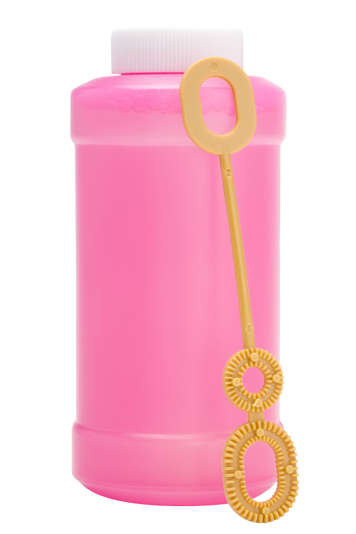
Description
Kids love to blow bubbles, and sometimes curious toddlers will drink the solution.
Poisoning risk
None/low.
Expected symptoms
- Possible upset stomach (discomfort, nausea, isolated episode of vomiting or diarrhea).
Home treatment
- Wash exposed skin area.
- Provide something to drink for dilution.
- For eye exposures, rinse eyes for at least 15 minutes with lukewarm water, then call the Poison Centre for further advice.
Remember:
- Every case is different. OPC is available 24hrs/day to provide information for your individual situation. Call 1-800-268-9017 (Toll-free) or 416-813-5900 (Local).

Description
Cannabis can be consumed through smoking, vaporizing the plant-based product, or through edibles (store-bought and home-made candy, oils or baked goods). The amount of THC (the chemical that causes the “high” effect) in edibles can be highly variable, especially in unregulated products. Unregulated means that the products do not come from an authorized provincial or territorial seller.
Poisoning risk
High in children: they are more at risk for severe poisoning. Ingestions can be life-threatening.
Expected symptoms
- Can range from mild drowsiness to coma.
Home treatment
- If a child has ingested a cannabis-containing product, take them to nearest emergency department.
- If an adult has had an unintentional exposure to cannabis and is concerned, call the Poison Centre for further advice.
Remember:
- This product should be locked up and out of sight with all of your other household hazards and medicines.
- Every case is different. OPC is available 24hrs/day to provide information for your individual situation. Call 1-800-268-9017 (Toll-free) or 416-813-5900 (Local).
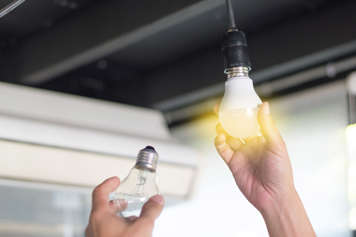
Description
Compact Fluorescent Lamps (CFL) use mercury, which can be highly toxic when the heated vapour is inhaled. However, the risk of inhalation is small at room temperature. In addition, the amount of mercury in these bulbs is very small and a broken bulb poses a very low risk to your health, unless mishandled or carelessly stored.
Poisoning risk
None/low with appropriate clean-up measures.
Expected symptoms
- Mild/moderate mercury poisoning (not expected from this exposure): cough, shortness of breath, lethargy, headache, tremors, nausea, vomiting, diarrhea.
Home treatment
- Leave room and ventilate area for at least 15 minutes.
- Do not use a vacuum or broom.
- Wear disposable gloves if available.
- Scoop up the broken pieces and debris with two pieces of stiff paper or cardboard.
- Use a sticky tape to pick up any remaining fine glass or powder.
- Wipe the area with a damp paper towel.
- Place broken glass and cleanup materials in a glass container with a tight-fitting lid, and take to local hazardous waste depot.
- If you have questions, call the Poison Centre.
*Note: For carpeted surfaces, visit the Health Canada website for more information.
Remember:
- Every case is different. OPC is available 24hrs/day to provide information for your individual situation. Call 1-800-268-9017 (Toll-free) or 416-813-5900 (Local).
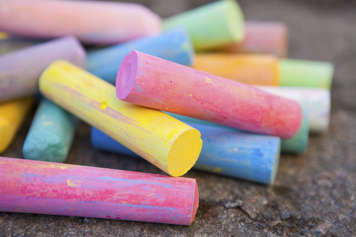
Description
Chalk (sidewalk, blackboard) is made of calcium salts and is not harmful in unintentional ingestions.
Poisoning risk
None/low.
Expected symptoms
- Possible upset stomach (discomfort, nausea, isolated episode of vomiting or diarrhea).
Home treatment
- Provide something to drink for dilution.
- If you have questions, call the Poison Centre.
Remember:
- Every case is different. OPC is available 24hrs/day to provide information for your individual situation. Call 1-800-268-9017 (Toll-free) or 416-813-5900 (Local).

Description
Unintentional gasoline ingestions can occur when trying to siphon a gas tank, or if a person takes a sip from an unlabeled container. Gasoline is not well absorbed from the stomach, but it is a very volatile substance (evaporates easily at room temperature) and can easily be coughed/choked on. Brief, unintentional inhalation exposures are common (e.g., at a gas station), and should not result in serious symptoms.Poisoning risk
Low for brief inhalation exposures and unintentional/mouthful ingestions where contents remain in the stomach.
High if gasoline slips into the lungs (can occur with coughing, gagging, vomiting): can cause a chemical pneumonia.
Expected symptoms
- Mild stomach irritation in unintentional/mouthful ingestions.
- Coughing, difficulty breathing, possible pneumonia if gasoline enters the lungs.
- Intentional or prolonged inhalation: can cause drowsiness and affect the heart rhythm.
Home treatment
- Call the Poison Centre for further advice.
- If swallowed and not coughing/choking, provide small sips of water to drink.
- If inhaled, get fresh air.
- For eye exposures, rinse eyes for at least 15 minutes with lukewarm water.
- If the person exposed has any difficulty breathing, call 911.
Remember:
- This product should be locked up and out of sight with all of your other household hazards.
- Always keep this product in its original container.
- Every case is different. OPC is available 24hrs/day to provide information for your individual situation. Call 1-800-268-9017 (Toll-free) or 416-813-5900 (Local).
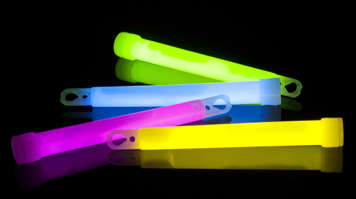
Description
Glow sticks and glow jewelry are popular among kids, especially around Halloween and other celebrations. Children will often chew on them, causing them to break open and spill the liquid in their mouth and hands.
The glow liquid is non-toxic but can cause a brief burning or stinging sensation when it comes into contact with the skin or mouth. This should not cause an actual burn.
Poisoning risk
None/low.
Expected symptoms
- Brief, mild burning sensation of skin and mouth.
Home treatment
- Provide something to drink for dilution.
- Wash exposed skin with soap and water.
- For eye exposures, rinse eyes for at least 15 minutes with lukewarm water, then call the Poison Centre for further advice.
Remember:
- Every case is different. OPC is available 24hrs/day to provide information for your individual situation. Call 1-800-268-9017 (Toll-free) or 416-813-5900 (Local).
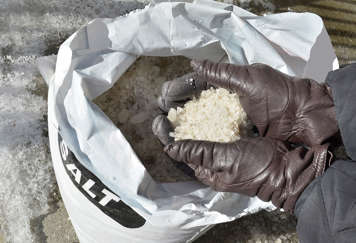
Description
Most ice melt products contain sodium, calcium, potassium and magnesium chloride, or a combination of these chemicals. Young children are often curious about these crystals/pellets, which can often be brought into the home from the bottom of shoes. Taste ingestions may cause irritation of mouth and stomach but rarely causes serious symptoms. Larger ingestions, particularly with ice melts containing mainly sodium chloride, can cause more serious symptoms.
Poisoning risk
Dependent on amount ingested.
Low in small/taste amounts.
High in larger amounts.
Expected symptoms
- Possible upset stomach (discomfort, nausea, isolated episode of vomiting or diarrhea).
- Possible skin irritation/redness.
- Large amounts (particularly sodium chloride), severe vomiting, diarrhea, lethargy.
Home treatment
- Provide water to drink for dilution.
- Wash exposed skin with soap and water.
- Call the Poison Centre for further advice.
Remember:
- This product should be locked up and out of sight with all of your other household hazards.
- Always keep this product in its original container.
- Every case is different. OPC is available 24hrs/day to provide information for your individual situation. Call 1-800-268-9017 (Toll-free) or 416-813-5900 (Local).
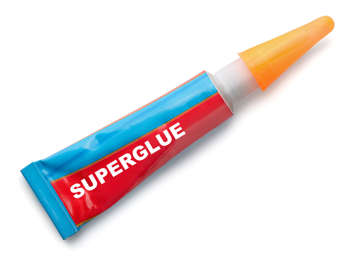
Description
The adhesive ingredient in super glue is called cyanoacrylate. When applied it bonds very quickly and transforms to a plastic state when dried/cured. If glue is accidentally dried on the skin, it will not cause poisoning. It may just take some time for it to completely wear off. If the glue gets in the mouth, the liquid becomes a solid very quickly and can cause choking.
Poisoning risk
Low.
Expected symptoms
- Skin-to-skin or skin-to-object adherence (they become stuck together)
Home treatment
- If dried glue is on the skin, can leave it alone to wear off or soak the affected skin surfaces in warm water.
- If skin surfaces are glued together, prolonged soaking of the affected body parts in water may soften bond and separate tissue surfaces. This may take several hours.
- Do not pull the skin apart as bleeding can result.
- Mineral oil, vegetable oil or petroleum jelly aids in the removal of cyanoacrylates from tender skin areas or around the eyes.
- If superglue gets in the eye and eyelids are not stuck together, rinse with lukewarm water.
- If eyelids are stuck together, do not use alcohol, acetone or any other chemical near the eye. Apply warm compress over the eye and call the Poison Centre for further advice.
Remember:
- Every case is different. OPC is available 24hrs/day to provide information for your individual situation. Call 1-800-268-9017 (Toll-free) or 416-813-5900 (Local).
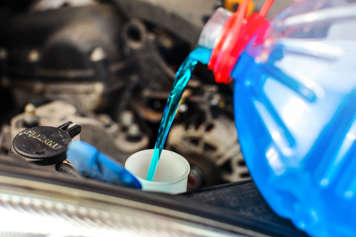
Description
Windshield washer fluid’s common base chemical is methanol, which is a highly toxic alcohol that can cause blindness and severe poisoning if ingested. It can also contain smaller amounts of other toxic alcohols including ethylene glycol. Methanol can be absorbed in minimal amounts from skin contact or inhalation; however it is most toxic when ingested.
Poisoning risk
High: dangerous in small amounts (more than a taste or a lick).
Expected symptoms
- Early symptoms may include drowsiness, drunk behaviour, and upset stomach.
- Can lead to blindness and death in severe toxicity.
Home treatment
- Call the Poison Centre right away for assistance.
- If more than a mouthful has been ingested, go to nearest emergency department for assessment.
- For eye exposures, rinse eyes for at least 15 minutes with lukewarm water, then call the Poison Centre for further advice.
Remember:
- This product should be locked up and out of sight with all your other household hazards.
- Always keep this product in its original container.
- Every case is different. OPC is available 24hrs/day to provide information for your individual situation. Call 1-800-268-9017 (Toll-free) or 416-813-5900 (Local).